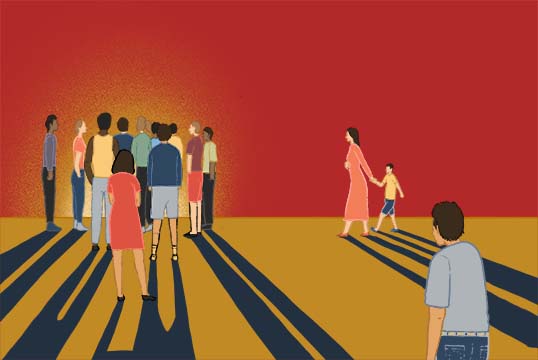It’s a common thing. You’re walking down the street or out running an errand, and all of a sudden you see a crowd of people staring at something. You stop, and you look in the same direction too. You see police cars and ambulances, parked every which way. People on the street start to say: what happened? What could it be? And more and more people—who want to know everything and yet know nothing—show up and try to catch a glimpse. You hear a murmur, spanning from those closest to the door where the paramedics and police went in, all the way to the farthest pedestrians. Oh, someone’s not doing well. Maybe someone’s dead. Someone was found dead. Someone died. And so on, until you see two paramedics carrying out a stretcher. On it, a woman who doesn’t look well—you don’t know if she’s alive or dead—there are tubes coming out of her. Oh, that woman is dead. She looks awful; she can’t be alive. It’s too late. Her neighbors can’t believe it. The family member who found her can’t stop crying. The police bustle through every room in the house, searching. They don’t know what they’re looking for. They open every door, every kitchen cabinet. They want to find some sort of clue. When the ambulance closes its doors and leaves for the hospital, people watching from the sidewalk start to disperse and let out their parting phrases: terrible, the things that happen; what could have been wrong with her; we’re not long for this world. . . And everyone goes back to their day. Most quickly forget what they’ve witnessed because they’re all very busy, and scenes like this one happen pretty often toward the end of the year. Some people, though, will keep thinking about it a little, periodically throughout the day. Maybe it’s because they’re more sensitive, and the image of that very pale woman appears to them against their will. There’s no escaping it. Finally, when they get into bed that evening, they might still ask themselves whether she’s alive or dead, and they’d love to be able to know. But that’s impossible because they’ll never see her again, and if they do, they won’t recognize her.
In this situation, I have the advantage. Only I can win the game; I hold the trump card. Even if at this moment I’m unaware—I don’t know if I’m alive or dead, either—I am the woman inside the ambulance. The only one who can explain what happened at home this morning is me.

